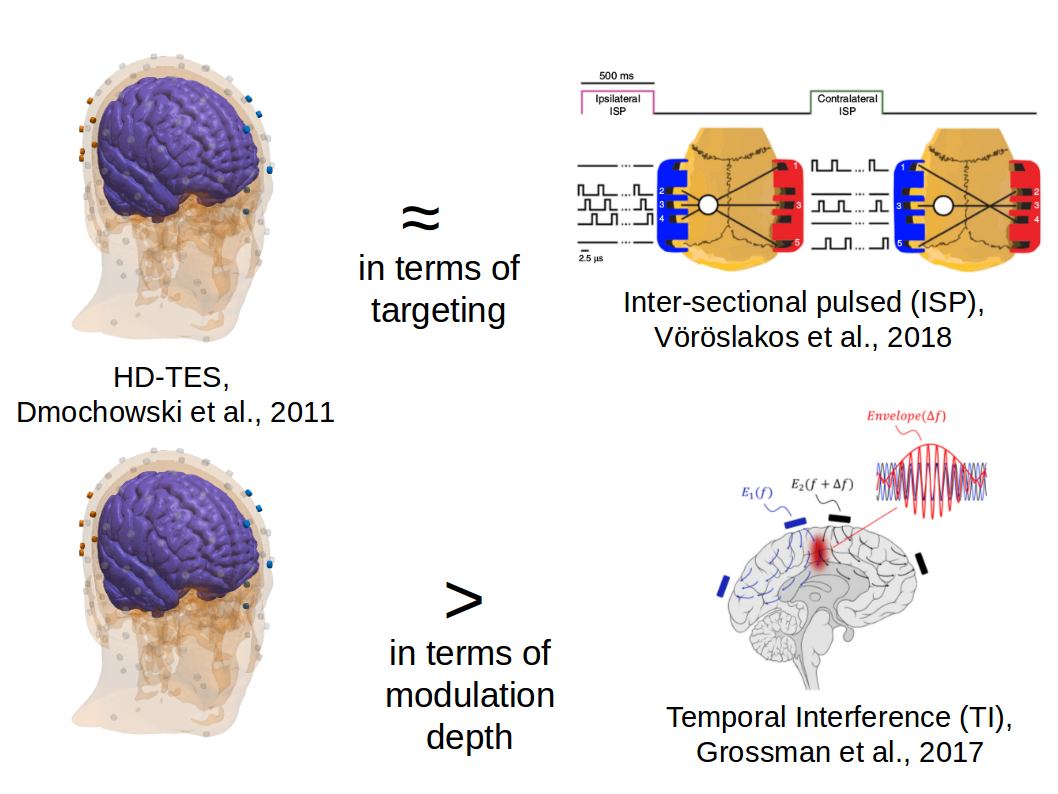Deep TES

There is skepticism about whether transcranial electric stimulation (TES) can effectively stimulate deep brain regions, as the scalp tends to divert most of the current. Recently, two new ideas have emerged: temporal interference (TI) stimulation and intersectional pulsed (ISP) stimulation. TI uses two alternating currents (AC) with similar frequencies. The claim is that the interference of these waveforms allows for focused stimulation in the deep brain. ISP uses short pulses of direct currents (DC) on multiple small scalp electrodes, suggesting that rapid injection of these pulses avoids scalp sensation while increasing brain stimulation. These new approaches have generated excitement within the TES community, attracting researchers and seemingly overshadowing conventional TES. However, our mathematical analysis demonstrates that TI cannot achieve the same stimulation intensity in the brain as conventional TES. Additionally, our computational models reveal that ISP and conventional TES offer the same spatial targeting. We also advocate for conventional TES by showing that optimizing electrode placement can indeed deliver current to deep brain regions by co-opting cerebroslinal fluid (CSF) to guide currents deep into the brain.
For details, see Yu Huang, Lucas C. Parra, 2018, Can transcranial electric stimulation with multiple electrodes reach deep targets?